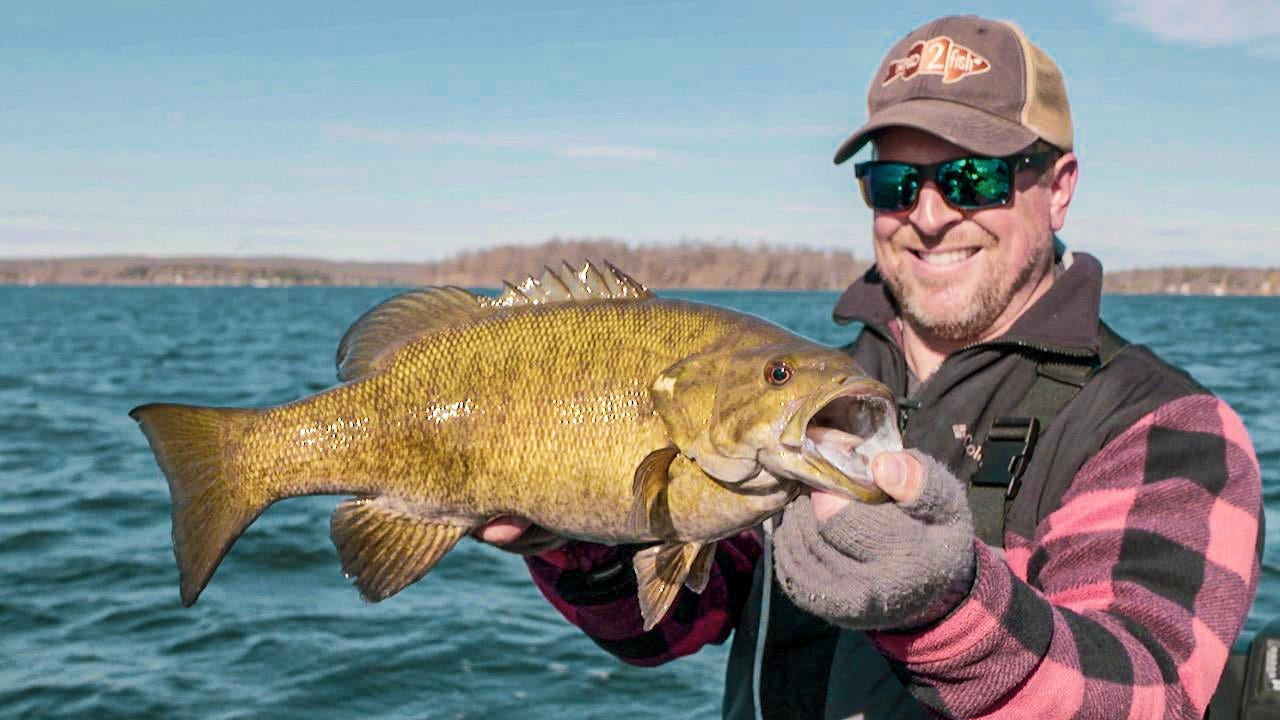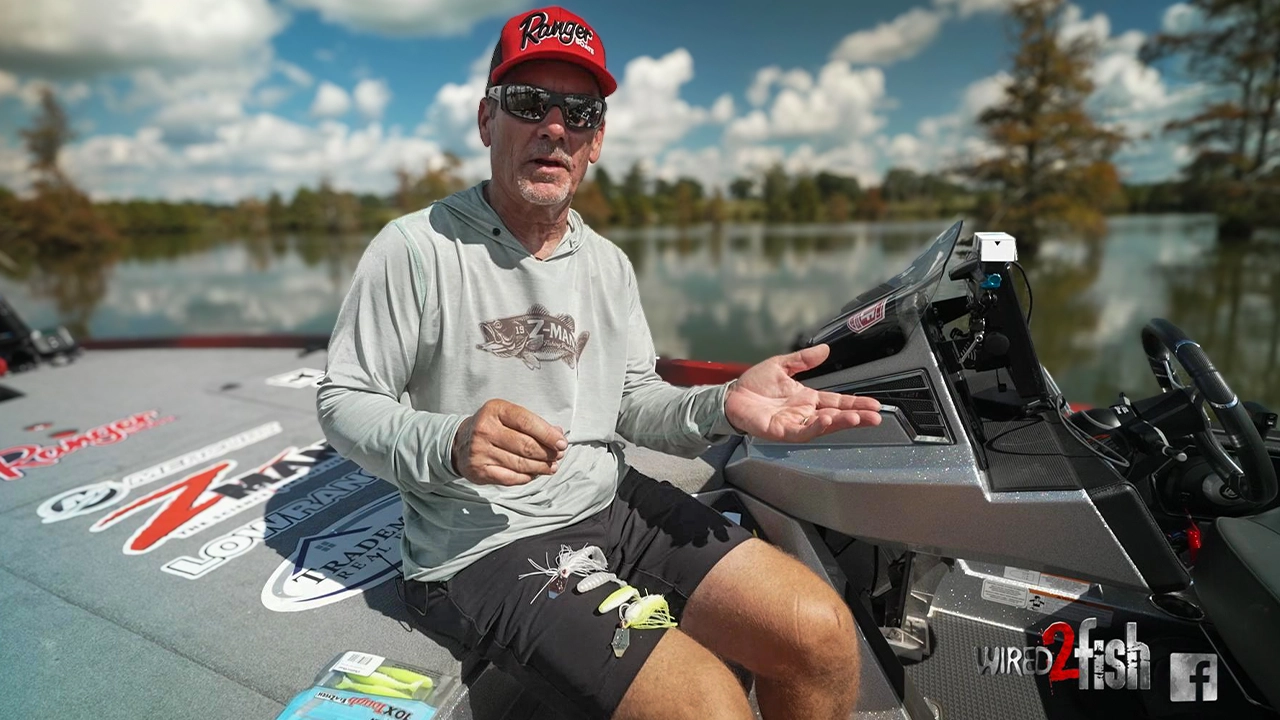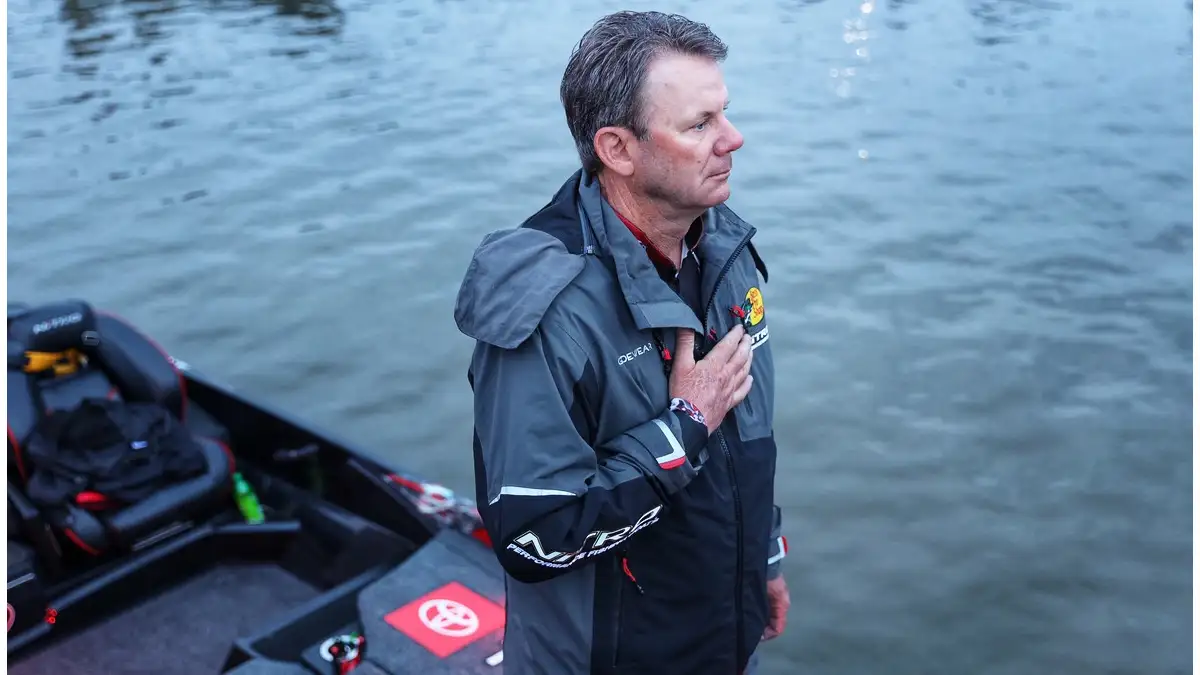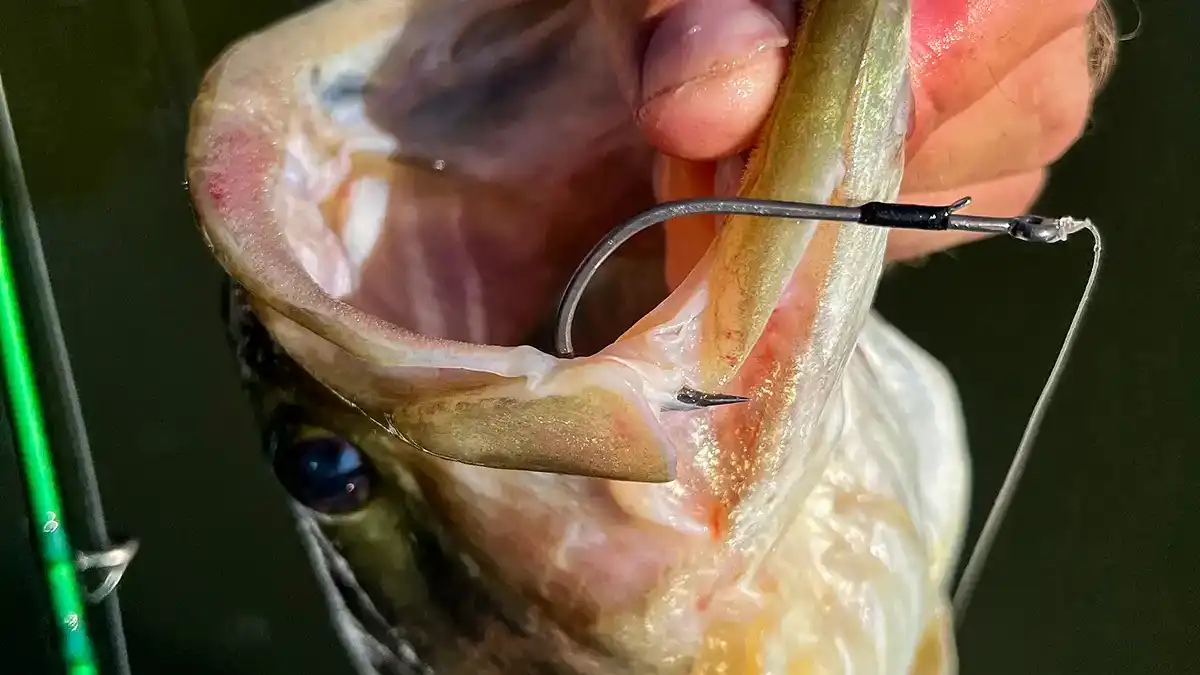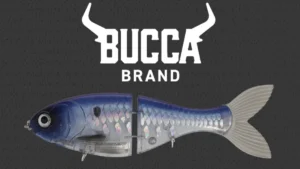If you live near smallmouth bass fisheries, the late fall is arguably the best time of year to tangle with numbers of big bass. Wired2Fish’s Ryan DeChaine explains in detail how to tackle winter hole smallmouth when water temps are in the 40s and lower (product links at the bottom). Specifically, he addresses the use of spoons paired with specialized treble hooks to attract and trigger strikes from bass in concentrated schools. While spoons and blade baits reign supreme in the 40s, Seth Feider expands and shares his favorite fall smallmouth baits from the 70s to the mid-to-high 30s in this comprehensive round-up video.
Here are DeChaine’s 8 late fall spoon tips for trigging aggressive feeding responses from fall and winter smallmouth bass:
- Incorporate a line-thru spoon into your bait lineup. This unique spoon design’s primary strengths are the elimination of line twist and reduction of fish leverage against the bait once hooked. These bait’s thin and aerodynamic design also allows them to cut the water and sink quickly, a big plus for deep-water applications. DeChaine is also a fan of their moderate flutter in cold water over the more pronounced traditional flutter spoon.
- Match spoon size and color to the predominant forage. For DeChaine, this is a baitfish pattern, not a crawfish one. He opts for spoons with a close baitfish match in size, finish, and color.
- Treat trebles hooks as lures. Mike Iaconelli drove this point home a few years back when creating this video on bladed treble bait modifications. DeChaine embraced the rationale that adding a little bit of flash and vibration to a treble hook can improve existing lures while making the hook a primary target of attack. Better hooking percentages seem to support this. Don’t overlook experimenting with colored resin and feathered hooks as well.
- Add a bobber stop to the fluorocarbon leader. Given its unconstrained design, line thru spoons tend to “wander” up your line. We are experimenting with this unique separation aspect but prefer managing it a bit. Much like a Texas rig, DeChaine varies the bobber stop from a pegged position to approximately 2-feet up the line. He envisions separation between the spoon and bladed treble as mimicking a school of baitfish rather than a single bait. The underwater video support this train of thought.
- Keep off the fish. DeChaine advocates positioning the boat either upwind or downwind of the bait to reduce the spooking factor that has become more prevalent on highly-pressured fisheries. And casting either up or downwind maintains a straight line and direct connect to the bait for working it responsively and detecting bites and the bottom. Casting perpendicular to the wind creates a line bow that reduces contact with the bait.
- Use a medium to medium-light power rod paired with a high-vis braided mainline and a fluorocarbon leader. A soft tip that transitions into a solid backbone supports bite detection for quick “reel setting” without exerting too much pressure on the treble hook. The bright-line aids in visible bite detection while the fluorocarbon leader adds stealth and stretch (forgiveness) to the setup.
- Make mini moves on the spot. While relatively confined to specific wintering grounds, smallmouth schools will roam the area. DeChaine leverages Spot-Lock to pin the boat either up or downwind of the fish, then systematically fan casts the area. Whether in response to dispersal from fish catches or natural movements, once you stop getting bit, make small moves in the immediate vicinity to regain contact with the school.
- Use a heavier slab spoon in high winds. When the wind is howling, upsize a heavier spoon with less flutter action to maintain bottom contact.
TACKLE USED
- Savage Gear Line Thru Baitfish Spoon, 2-inch
- VMC Bladed Hybrid Treble, size 6
- VMC Sinker Stop
- Savage Gear Squad Spinning Rod, 7′ Medium (Replaces Browser Rod)
- Sufix 832 Braided Line Hi Vis Yellow, 10lb
- Sufix Advance Fluorocarbon, 10lb
- Luhr Jensen Crippled Herring Spoon
- VMC Glow Resin Treble Hook
- Savage Gear Savage Grip Treble Hook
- Frabill Clear Rubber Conservation Net
- StrikeMaster Surface Bib
FISH FINDERS / ELECTRONICS
- Humminbird MEGA 360 Imaging @ Tackle Warehouse | @ The Bass Tank
- Humminbird SOLIX 10 CHIRP MEGA SI+ G3 (bow stack) @ Tackle Warehouse | @ The Bass Tank
- Humminbird SOLIX 12 CHIRP MEGA SI+ G3 (bow stack) @ Tackle Warehouse | @ The Bass Tank
- Humminbird SOLIX 15 CHIRP MEGA SI+ G3 (console) @ Tackle Warehouse | @ The Bass Tank
- Minn Kota Ultrex Trolling Motor @ Tackle Warehouse | @ The Bass Tank


